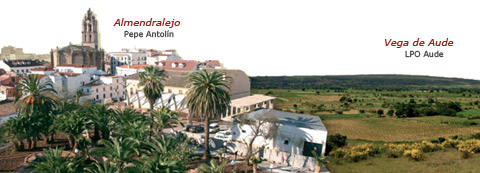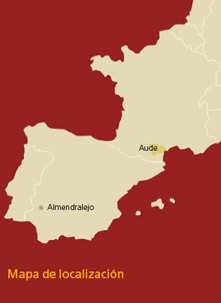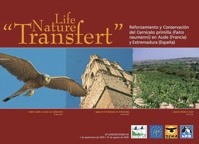Reinforcement and Conservation of the Lesser Kestrel (Falco naumanni)
in Aude, (France) and Extremadura (Spain).
2. What is LIFE Programme?
What is LIFE Programme?
Since the year 1992 LIFE has been the European Union’s financial instrument supporting environmental and nature conservation projects throughout the EU, as well as in some candidate, acceding and neighbouring countries. One of its objectives is to enhance the consideration of environmental issues and sustaining development in local politics.
The main goal of the LIFE Nature projects is the development of the web NATURA 2000, which aims to conserve European habitats and species of animals and plants. The projects aim to maintain and recover the environments and / or the populations of the species for which it’s considered to be necessary. These projects have to be related to special zones for the protection of birds (ZEPA; Zona Especial de Protección para las Aves, Special Birds protection areas) or with places and species mentioned in the European directives.
More information: http://ec.europa.eu/environment/life/
The projects of LIFE Programme are supported by the National Plans of Conservation of the countries of the European Union. For example in France the plan for the reintroduction of the Lesser Kestrel has been made under the protection of the Ministry of Ecology and Sustaining Development.
Main Objectives of LIFE Transfert
The project aims to conserve and improve the conservation and status of the Lesser Kestrel population in two sites in France (Aude) and one in Spain (Almendralejo in Extremadura). This is possible through collaboration and mutual sharing of experiences and knowledge.
In Spainthe actions concerning the colony in the town of Almendralejo are restoration of the nesting sites and studies of the reproductive biology of the species in an urban environment.
In Francea programme of reintroduction will be carried out in Aude. The objective is to promote the creation of a new colony in order to reintroduce the species to the areas where it used to be common.
The maintaining of the feeding habitats is a big challenge for the recuperation of the species. In the LIFE Programme is included making a guide for the maintenance and management of the habitats of the areas (Aude and Extremadura).
The expected results are:
- Conservation of the nesting sites
- Restoration and conservation of the feeding areas
- Creation of a colony of minimum 10 pairs in Aude
- Reducing mortality during the breeding season
- Evaluation of the achieved results during a sufficient period
- Reciprocal exchange of knowledge of the conservation, feeding areas of the Lesser Kestrel and of its breeding habitats.
Presentation of the two zones
The zones of the LIFE – Transfert have a 950 km distance between them. The French one is situated in the region of Languedoc-Roussillon in Aude and contains the counties of Fleury d’Aude, Narbonne, Gruissan, Armissan and St. Pierre-sur-Mer. The Spanish zone is in the town of Almendralejo in the region of Extremadura.
The actual area consists of the surroundings of a church in Almendralejo (Iglesia de la Purificación, ZEPA). This ZEPA is in the heart of a completely urban environment and covers the area of 4 hectares. The total area in which the studies are carried out is
14 000 hectares, the entire county.
The present habitats:
84 % of the land of Almendralejo is cultivated. 47 % of this is vineyards, 29 % olive and 8 % cereal. The remaining land consists of urban or dry areas and waste land (steppes).
About 100 pairs nest in Almendralejo, about 80 of which in the roof and the tower of the church (Iglesia de la Purificación). In the beginning of the 1980’s the roof was renovated and the old tiles that were apt for nesting were destroyed. However, the colony survived thanks to the new artificial nests that were designed and installed by DEMA.
The area consists of two ZEPAs: the Macizo de la Clape (9 064 hectares) and the plain of Aude (4 853 hectares). The total surface is 41 860 hectares.
The area consists of prairie and low Mediterranean mountains (30 %), vineyards (23 %) and wasteland, prairie and meadows (20 %) as well as Mediterranean salt steppes (16 %).
There was a Lesser Kestrel colony in the cliffs of Macizo de la Clape until the year 1965. In 2003 one pair was successfully reintroduced in the border of the Macizo de la Clape and the plain of Aude occupying nests of European Roller. In 2004 two pairs were observed on the area and none in 2005 and 2006.







